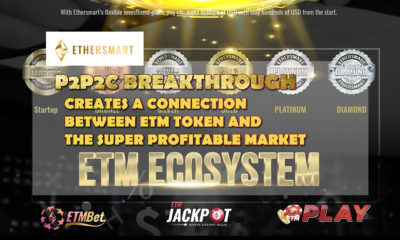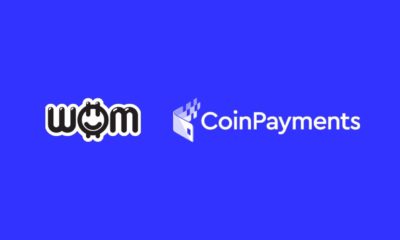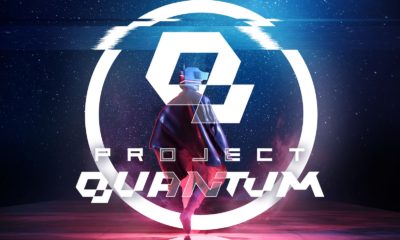Blockchain
Experts Warn of Vulnerabilities about Ethereum Blockchain Security

Experts warn of vulnerabilities about Ethereum blockchain security, raising concerns about the safety of billions of dollars in cryptocurrency and the integrity of decentralized applications built on the platform.
A recent poll by Galaxy Digital researcher Christine Kim, on the social network “X” – former Twitter, reveals significant misconceptions within the Ethereum community about how much staked Ethereum (ETH) is necessary to secure the network.
Vulnerabilities of Ethereum: Less Staked ETH Needed for Attack Than Many Believe
Respondents displayed the following beliefs about Ethereum’s security:
- 44.9% believed that securing Ethereum requires 100% of all ETH staked, amounting to $110 billion, 31.4 million ETH.
- 20.4% thought 66.6% of staked ETH was sufficient, equivalent to $73.4 billion, 20.9 million ETH.
- 34.7% felt that only 33.3% of staked ETH, or $36.7 billion, 10.4 million ETH, was required for security.
Addressing these misconceptions, Christine Kim emphasized the actual vulnerabilities of Ethereum’s Proof-of-Stake (PoS) mechanism in a detailed follow-up. She highlighted that an attacker can disrupt finality with 33% of the total stake, prolong a chain split with 50%, and double spend with 66% of the total stake.
Kim added that security primarily depends on the network’s ability to penalize stakers by burning large amounts of the locked value. The worse the attack, the more value stakers stand to lose.
It is crucial to comprehend the true significance of the situation, with a pun intended. Further elaboration from the Ethereum Foundation explains the technical underpinnings of these vulnerabilities.
An article by the foundation states that attackers using >= 33% of the total stake make all attacks mentioned more likely to succeed.
If the amount exceeds this limit, it would be a more precise and concise way of getting the same meaning so they can prevent the chain from finalizing without having to control the actions of the other validators.
For attacks involving 34% of the total stake, the article detailed a possible scenario of “double finality” where an attacker can manipulate the validation of two conflicting blockchain forks at the same time. This kind of attack is characterized by significant coordination and control over the timing of messages within the network, posing a high risk due to the potential slashing of the attacker’s entire staked amount.
Higher levels of controlled staking, such as 50% and 66%, increase the potential for more severe disruptions, including sustained chain splits and transaction censorship or reversal.
The foundation’s article elaborates that at >50% of the total stake, the attacker could dominate the fork choice algorithm, enabling them to censor certain transactions, do short-range reorgs, and extract maximum MEV by reordering blocks in their favor.
Ethereum Blockchain Security: The Power of Community Consensus
To protect the Ethereum network from security risks, it has an “inactivity leak” mechanism that gradually reduces the stake of inactive or malicious validators. Additionally, if the chain splits, the Ethereum community uses social consensus to decide which chain to follow.
These revelations underscore the importance of community awareness and technical safeguards in maintaining the security and integrity of the Ethereum network. While Ethereum’s PoS system offers several security advantages, it also requires vigilant monitoring and readiness to act against potential attacks.
As the Ethereum staking landscape evolves, several key trends have emerged, reshaping how stakeholders interact and benefit from the staking process.
The Rise of Re-staking and the Challengers to Lido’s Dominance
Tom Wan, researcher at 21.co, highlighted these trends in a recent post:
- Increase in Re-staking Popularity: Since 2024, there has been a significant shift towards re-staking in the Ethereum ecosystem.
- Re-staking contributions have grown from 10% to 60% of the total staked ETH. Eigenlayer, in particular, has risen to prominence as the second-largest DeFi protocol on Ethereum, holding a $15 billion Total Value Locked (TVL), which represents 13% of all staked ETH.
- The decline in Lido’s Market Share: The rise of liquid restaking protocols has noticeably impacted Lido’s dominance in the Ethereum staking market. Lido’s share has fallen below 30%, influenced by the growth of new platforms like Etherfi, which has become the second-largest withdrawer of stETH since 2024, totaling withdrawals of 108k stETH.
- Centralized Exchange (CEX) Staking Decline: The prevalence of centralized exchanges in ETH staking has decreased from 29.7% to 25.8% since 2024. Kiln Finance recently surpassed Binance to become the third-largest ETH staking entity. Ether.fi is gaining market share and is positioned to challenge Binance’s former dominance shortly.
In conclusion, the Ethereum community must be aware of the actual vulnerabilities of the blockchain’s security and take necessary measures to protect the network.
The trend towards re-staking, decline in Lido’s market share, and centralized exchange staking decline are significant developments that will shape the future of Ethereum’s staking landscape.
Blockchain
Could BlockDAG Reach $1? Whales Move In as 2025’s Top Crypto Presale Breaks Records

BlockDAG is fast becoming one of the standout stories in the crypto space this year. With more than $327 million raised, over 23.5 billion BDAG coins distributed, and an ecosystem already supported by a community of 2 million-plus mobile miners, BlockDAG is proving it’s more than just hype.
It’s now gaining recognition as a Layer 1 platform with actual momentum behind it. The major question many analysts are asking now: Can BDAG hit the $1 mark in the coming years?
With a presale entry price as low as $0.0016 available until the BlockDAG GLOBAL LAUNCH release on August 11, and signs of increasing activity from high-value wallets, BlockDAG’s rapid growth is drawing serious attention. If these early signals prove accurate, BlockDAG could be one of the top crypto presale that transition successfully into long-term market relevance.
Whale Wallets Are Moving, and It’s Creating a Buzz
One of the clearest signs of serious traction in a crypto project is when high-volume wallets begin to act, and that’s exactly what’s happening with BDAG.
Current on-chain data shows several wallets acquiring BDAG in amounts ranging from 7 to 8 figures, all through the limited-time $0.0016 pricing window before August 11. These aren’t casual buys. The scale suggests participation from large holders, potentially including institutional players and crypto whales, who are taking advantage of the pricing before the official launch value of $0.05 kicks in.
Such movements typically happen before major market shifts. These wallets appear to be aligning with the project’s upcoming roadmap, which includes community-run nodes and a full suite of decentralized apps with Ethereum Virtual Machine compatibility.
How BlockDAG Achieved a $327M Raise and Why It’s Significant
Unlike many projects that rely on funding from venture capital, BlockDAG has reached $327 million entirely through public participation. This sets it apart not just for 2025, but across crypto history, putting it ahead of even the most well-known presale successes:
- Filecoin brought in $233 million in 2017
- Polkadot raised $145 million
- Ethereum’s launch in 2014 generated around $18 million
BlockDAG has already outpaced all of these, even before going live.
This level of funding shows two things:
- Widespread belief in the long-term viability of the project
- A strong financial base to support ecosystem development and growth
For those watching this closely, the implications are huge. BlockDAG is stepping into the open market not just with promises but with an active product base. This includes tools like the X1 Miner App, ASIC hardware integration, and a no-code smart contract creator already in use.
Could BDAG Really Hit $1? Here’s What the Numbers Say
Consider these examples: Kaspa crossed $4 billion market cap in 2023. Avalanche exceeded $15 billion during a bullish cycle. Even meme-based coins like PEPE reached multi-billion valuations despite lacking strong utility.
BlockDAG, in contrast, already delivers real substance. It operates a functioning testnet with active smart contract support and runs on a hybrid DAG and Proof-of-Work model capable of handling 15,000 transactions per second. Over 18,250 mining rigs have been sold, reflecting solid hardware demand. Its code is audited, certified, and ready for decentralized app deployment. The roadmap also includes a developer academy, a DeFi launchpad, and a cross-chain bridge, all designed to expand utility and ecosystem depth.
This isn’t about potential; it’s already a working Layer 1 platform. If even a modest share of its 2 million mobile miners begin using the mainnet, the $1 target shifts from speculation to a strategic milestone.
Right now, BlockDAG is offering a limited-time pricing option at $0.0016, even though Batch 29 is at $0.0276. With smart reward structures that encourage long-term holding, the project is building strong liquidity and a self-reinforcing price model as adoption grows.
Ecosystem Strength and Market Visibility Are Driving Growth
BlockDAG’s success isn’t just about the presale. Several key developments are boosting its visibility and utility:
- 20 centralized exchange listings are confirmed
- A 100 million BDAG airdrop tied to presale activity, referrals, testnet usage, and social engagement
- A potential U.S.-based sponsorship to build mainstream awareness
This shows a focus on sustainable growth rather than flash marketing. When branding, liquidity, and user activity align, strong price movement often follows.
Real Utility Meets Real Demand: A Project with Purpose
BlockDAG is not just another promise in a whitepaper. With $327 million raised, strong early participation from large holders, and tools already being used by the public, it has the structure needed to rise fast as one of the top crypto presale projects.
BDAG may well become one of the few coins that bridges true utility with wide-scale community adoption. The push toward a top-50 market position may not be far off if growth continues.
Right now, the special $0.0016 window is still open until August 11. Once it closes, the next price shift may come not from another presale round, but from entry into the open market.
Presale: https://purchase.blockdag.network
Website: https://blockdag.network
Telegram: https://t.me/blockDAGnetworkOfficial
Discord: https://discord.gg/Q7BxghMVyu
Blockchain
Litecoin Retreats, Pi Coin Sinks After Listing Pushback, But Unstaked Races Forward with Real Utility and $5 Potential!

Litecoin (LTC) is showing signs of fading momentum, with its price dropping under $90 and struggling to stay above $87.5. Market sentiment has clearly turned bearish, and traders are cautious. Meanwhile, Pi Coin has seen a steep decline, falling over 35% as confidence in its progress fades. With both showing weakness, attention is shifting to newer projects like Unstaked.
Unstaked’s $UNSD token does not rely on hope or hype. It is tied directly to actual usage. AI agents use $UNSD to run tasks on platforms like Telegram and Discord. Each action within the network uses tokens. This gives the token true demand. As more users join, the number of tasks increases. That means token usage scales naturally with activity. It’s a simple model with powerful logic, and that’s why experts predict a surge to $3-$5 in the long term.
Litecoin Faces Downtrend with No Major Catalyst in Sight
Litecoin’s (LTC) recent slide below $90 has traders watching closely. The $87.5 level is now the key support zone. Trading volumes are low, and buyers aren’t showing strong interest. Price has stayed in a tight range since early June.
Technical indicators back the bearish outlook. RSI is falling. Short-term moving averages also show weakness. LTC is still used as a low-fee crypto, but its price hasn’t followed other top coins lately.
Without strong news or a major upgrade on the horizon, Litecoin looks stuck in neutral. For swing traders, it offers clear zones to enter and exit. But for those chasing long-term growth from active platforms, LTC lacks fresh drivers compared to newer utility-based projects.
Lack of Clear Roadmap Weighs Heavy on Pi Coin’s Price
Pi Coin’s decline continues after yet another delay in its expected mainnet launch and exchange listing. The team recently cited backend issues, pushing the timeline beyond mid-June 2025. This delay hit user confidence hard. Pi’s price in off-market trades dropped fast, falling from $44 to below $30.
On-chain metrics show limited activity. There is still no fixed date for listings on public exchanges. As the delays pile up, many early users are losing patience. Some are selling off OTC holdings, adding to the pressure.
App engagement is high, but without a working market, token value remains weak. If Pi Coin doesn’t secure a verified listing soon, it risks further downside. Right now, it looks more like a stalled beta project than a crypto ready for mass adoption.
Why AI Utility Sets Unstaked Apart Before Launch!
Unstaked’s $UNSD token is part of a working platform where each use case supports its value. Every AI agent launched in the system will need $UNSD to complete tasks. These range from managing chats to running campaigns. As usage increases, so does token movement.
This structure builds scarcity naturally. $UNSD is not held for speculation; it’s spent across activities in the network. More agents mean more actions, and that means more token use. That’s why many expect the price to reach $3 to $5, not as a guess but as an effect of real adoption.
Unstaked’s presale crypto 2025 is now in Stage 22, with each token priced at $0.01209. Over $10.6 million has been raised so far, and more than 1.2 billion tokens have been sold. No private sales were held. Liquidity will be locked, and the contracts are fully visible to the public.
Importantly, the AI agents will go live only after the presale ends and the project officially launches. This clear roadmap sets expectations right. Many see this as a chance to get in early before network activity picks up. With a utility-based model already in place, $UNSD stands out from projects still chasing hype.
Looking Ahead
Litecoin is under pressure, with prices near $87.5 and no bullish signs ahead. Pi Coin’s crash to $26 has frustrated users as exchange delays stretch on. Both coins face uncertainty, and traders are cautious.
Unstaked, however, is building a network tied to real function. Its $0.01209 token is powering automated tools, and its model rewards actual use. As the launch nears and AI agents go live, demand for $UNSD is expected to rise. For those looking at 2025 prospects, Unstaked’s setup feels more grounded, a system where growth follows real work, not just sentiment.
Join Unstaked Now:
Presale: https://presale.unstaked.com/
Website: https://unstaked.com/
Telegram: https://t.me/UnstakedTokenOfficial
Blockchain
4 Best Crypto Projects Showdown: BlockDAG, LINK, ARB, TAO; Who Will Win The Battle

With so many coins out there, it’s easy to feel lost when trying to pick the best crypto projects. Many people fall for hype, only to see little return. What really matters today is finding coins that reward effort, offer fair systems, and have growing use cases. BlockDAG, Chainlink (LINK), Arbitrum (ARB), and Bittensor (TAO) are gaining attention for these reasons.
They give users chances to take part through tasks, staking, or technical work, instead of simply holding coins. Here, we break down how each of these projects delivers real value and why they deserve a closer look. Keep reading to see how these coins can offer smarter ways to join the crypto world.
1. BlockDAG: Noted For Impressive Growth Potential
BlockDAG is quickly standing out as one of the best crypto projects for those looking to stay active and earn rewards in more than one way. Its task-based airdrop system offers flexibility by letting users choose tasks that match their skills and interests.
Those with a technical background can engage in testing activities on the Beta Testnet and contribute to the development process. People who have a passion for sharing and building communities can invite others or help promote BlockDAG (BDAG) through various platforms.
Even casual users who enjoy spending time on social media can take part by completing small tasks that come with rewards, making BlockDAG appealing to a wide range of participants.
BlockDAG has already raised an impressive $326 million, with 23.4 billion coins sold, showing strong interest and support from the crypto community. There is a fixed price at $0.0016 until 11th August.
BlockDAG’s combination of rewards and appealing presale prices positions BlockDAG as a strong contender among top cryptos for active participants who want more than just passive holding.
2. Chainlink: Delivers Value With Real World Data
With steady updates and wider use across chains, LINK offers long-term strength. It may not have task-based airdrops like BlockDAG, but it remains a trusted choice for real-world crypto use.
Chainlink is among the best crypto projects thanks to its long history of connecting smart contracts to real-world data. LINK helps power DeFi apps, games, and more through its oracle network and Proof of Reserve system. It lets users stake and help secure the network, earning rewards for their part.
3. Arbitrum: Trusted For DeFi App Growth
Arbitrum is considered one of the best crypto projects for those interested in helping Ethereum scale. It cuts fees and boosts transaction speed, which makes it popular with DeFi, NFT, and app builders.
ARB holders can vote on grants, help decide network updates, and take part in governance. DeFi apps on Arbitrum offer ARB-based rewards for liquidity and staking. Its long-term appeal lies in making Ethereum smoother while giving users a say in the future.
4. Bittensor: Drives AI Growth With TAO
Bittensor is a unique entry on the list of the best crypto projects, especially for those excited by AI. TAO lets people join a shared AI network by training models. Contributors earn based on the value of their work, not just for holding coins.
TAO offers developers and researchers a new way to be rewarded for advancing AI, free of large central control. As AI demand grows in 2025, TAO’s blend of crypto and tech keeps gaining attention.
Final Thoughts
The best crypto projects aren’t about hype or fast profits. They focus on fair rewards for real effort. BlockDAG offers early and flexible ways to earn through tasks and smart presale offers. LINK helps secure the core of blockchain with its trusted oracle system.
ARB makes Ethereum more user-friendly while adding governance options. TAO lets users shape AI while earning fairly. Together, these coins show how effort-based rewards are defining the future of crypto.
-

 Crypto3 years ago
Crypto3 years agoCardalonia Aiming To Become The Biggest Metaverse Project On Cardano
-

 Press Release5 years ago
Press Release5 years agoP2P2C BREAKTHROUGH CREATES A CONNECTION BETWEEN ETM TOKEN AND THE SUPER PROFITABLE MARKET
-

 Blockchain5 years ago
Blockchain5 years agoWOM Protocol partners with CoinPayments, the world’s largest cryptocurrency payments processor
-

 Press Release5 years ago
Press Release5 years agoETHERSMART DEVELOPER’S VISION MADE FINTECH COMPANY BECOME DUBAI’S TOP DIGITAL BANK
-

 Press Release4 years ago
Press Release4 years agoProject Quantum – Decentralised AAA Gaming
-

 Blockchain5 years ago
Blockchain5 years agoWOM Protocol Recommended by Premier Crypto Analyst as only full featured project for August
-

 Press Release5 years ago
Press Release5 years agoETHERSMART DEVELOPER’S VISION MADE FINTECH COMPANY BECOME DUBAI’S TOP DIGITAL BANK
-

 Blockchain5 years ago
Blockchain5 years ago1.5 Times More Bitcoin is purchased by Grayscale Than Daily Mined Coins






